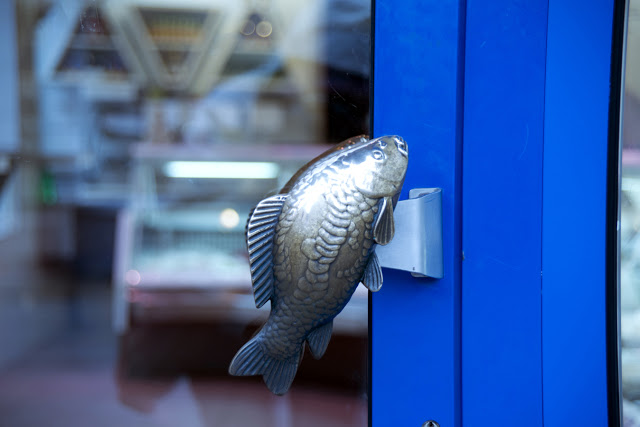Don’t forget to buy my books! I have cookbooks, photo books, craft books and English-learning workbooks. They make amazing gifts and wonderful retail therapy items. Click here to buy any and all of them on Amazon.
This post was originally published on March 10, 2013 and updated on January 28, 2020.
A couple of weeks back my friend Carmela and I visited a beautiful palace in nearby Coburg. Both Martin Luther and Johann Strauss were citizens of Coburg at one time or another. You may remember Carmela from previous posts in which we visited the Audi museum in Ingolstadt and in which we made authentic Mexican tamales. And you may remember Coburg as the site of the samba festival I visited last year.
The settlement at Coburg dates from before 1056. But we’re going to fast-forward about 500 years to after it had become a duchy. Of course, they built a palace named Ehrenburg. Successive dukes began and added onto the palace over the next 200 or so years until it had reached its current footprint. However, it was in very sad shape come the 1800s.
Duke Ernst I, who reigned in Coburg from 1806 to 1844, is the hero of this story because he was the one to approve and finance the complete renovation of Ehrenburg. He and his son Ernst II saw it through, and they are mainly responsible for the grandeur of the palace as it stands today. Fortunately, Ehrenburg survived both world wars intact. However, it must be said that the two world wars and many years of use by non-ducal governmental offices took its toll. In 1968, the German state of Bavaria began the restoration of Ehrenburg to the condition it was in when the Dukes Ernst I and II were living there.
The family of Duke Ernst I was quite powerful throughout Europe at the time. His brother Leopold became King of Belgium, for example. The most interesting fact to me is that Ernst I’s niece was Queen Victoria of England and his own son was Victoria’s husband, Albert. Yes, they were first cousins.
Here is Ehrenburg in all her glory, flanked by Carmela:

You can’t visit Ehrenburg without going on a guided tour, but there is a tour scheduled every hour during opening hours. We showed up just before 11:00 that day and paid our 4 Euros 50, a very cheap price thank you German government who subsidizes such things for us!
The tours are given only in German. However, we were the only ones on the tour! So a very young and rather morose German tour guide handed us English translations of the tour on paper and unlocked the first door for us. I was ecstatic that I was allowed to take pictures (but no flash)!
I wondered if our silent young man would give us the tour in German as we read our handouts. But, no, he just unlocked doors and turned on lights then stood quietly aside while we gawked. The handouts were good, though, and listed the rooms in order. I verified which room we were in with the guide, who actually did speak enough English for that. Carmela is learning English from Spanish and so I ended up giving her the tour, more or less, after scanning the handout as we entered each room.
We started the tour on the second story of the palace. In the first room we entered we went crazy over the crystal chandelier! Take a look at this beauty!
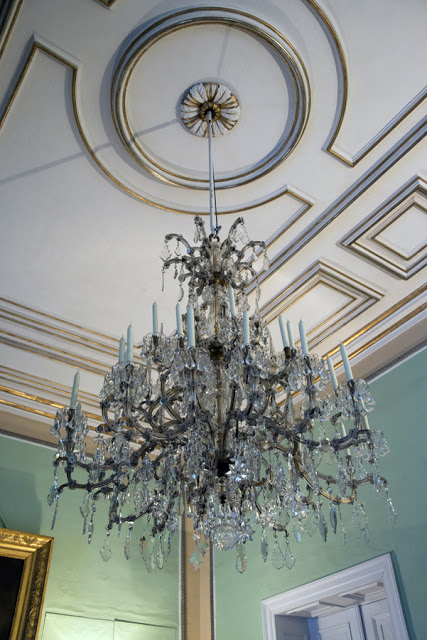
However, it turned out to be rather plain compared to some of the chandeliers in the rest of the palace. You’ll see!
Also in this foyer was a good example of the ceramic stoves used for heating back in the day. You’ll notice at least one in every room of the palace. A fire would be kept in the bottom grate and the heat would radiate from the ceramic tiles and ornamentation to heat the room.

The next room was called the Family Hall. You can see another beautiful chandelier and a wonderful wooden ceiling in this next shot. You can also see Duke Ernst I in the painting at the far end of the room:
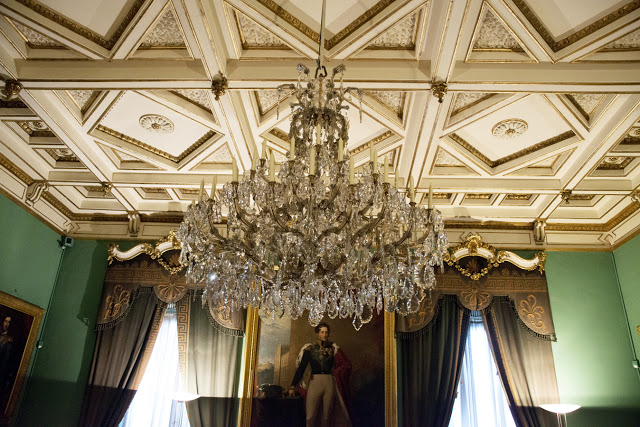
Here’s the White Room, which was used as a “small dining room” and concert hall. Check out the ceiling! The guide said all the gold trim is real gold leaf:
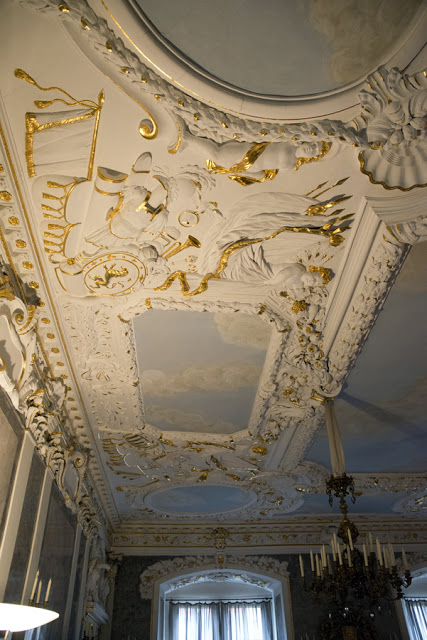
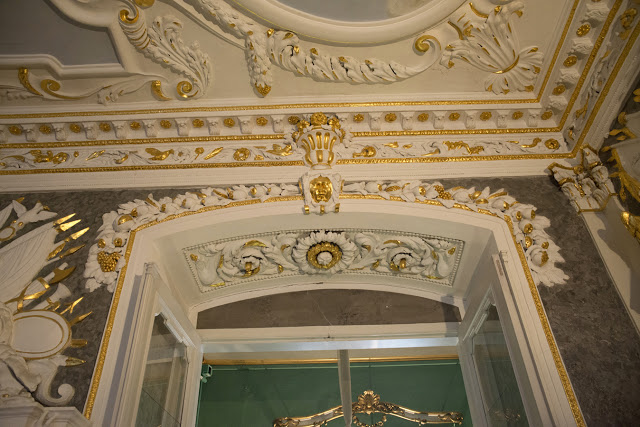
The single most impressive room in this palace is the Hall of Giants, which was created back in the 1690s. You can see why it’s called the Hall of Giants when you notice the 28 HUGE male caryatids supporting the walls.
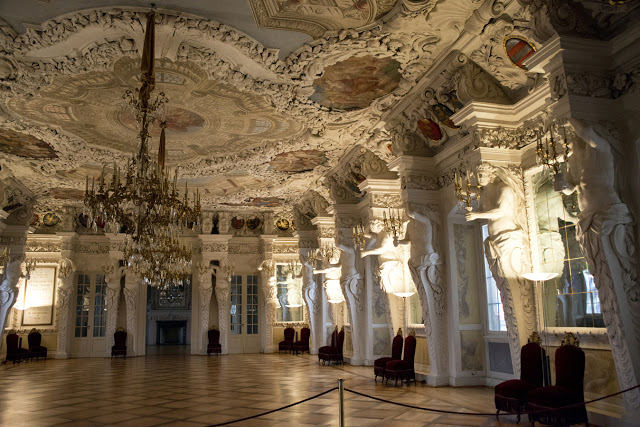
This room alone was worth the whole trip to me. Just check out the stucco detail, parquet floor, gold leaf and ceiling paintings!
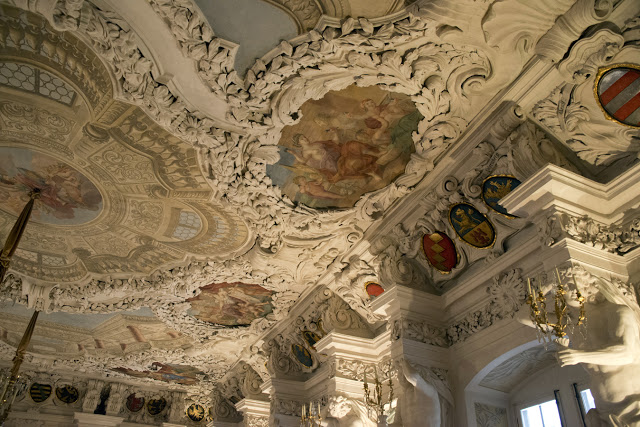
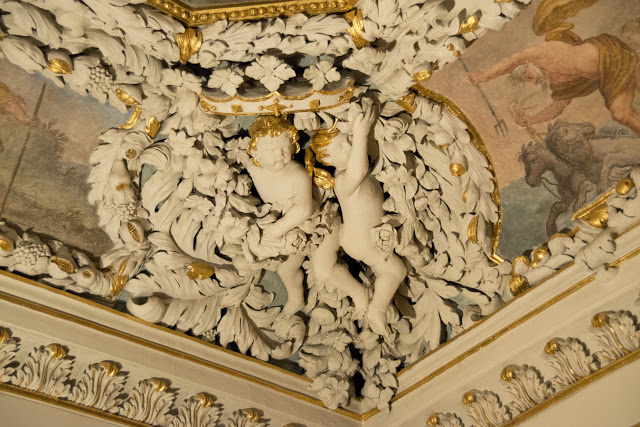

The next room was an art gallery. The painting they seemed most proud of was this one by Lucas Cranach the Elder called “Man of Sorrows.” I feel a kinship to this Renaissance painter because he was born in Kronach, which I’ve visited and written about before.
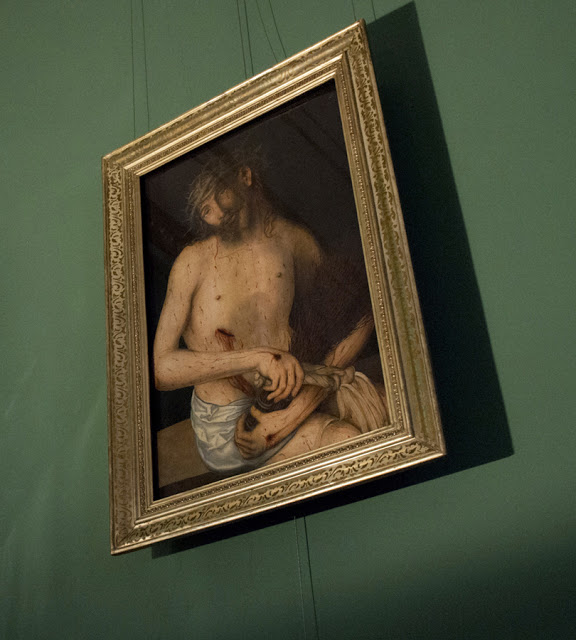
We visited the so-called Gobelin room, so-named because of the Gobelin tapestries adorning the walls. Gobelin was and still is a famous tapestry manufacturer in Paris which was home to Flemish tapestry makers. In fact, much of the furnishings at Ehrenburg were from Paris, a favorite hang-out of Duke Ernst I. I kinda like his style! The tapestry on the right in this photo wraps around a curved wall. The wall is curved like that because an elevator was installed behind it for Queen Victoria on her visits. And just look at that ceiling!
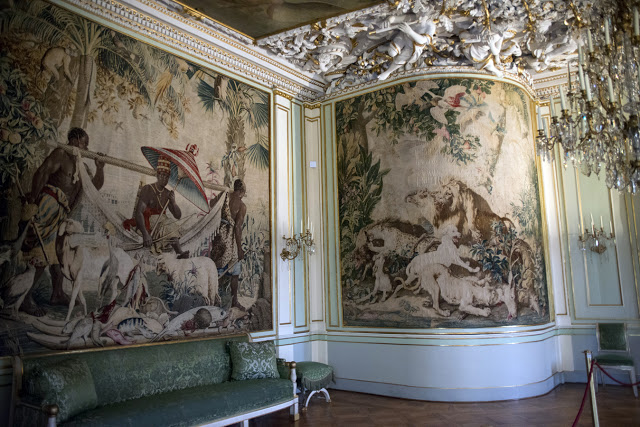
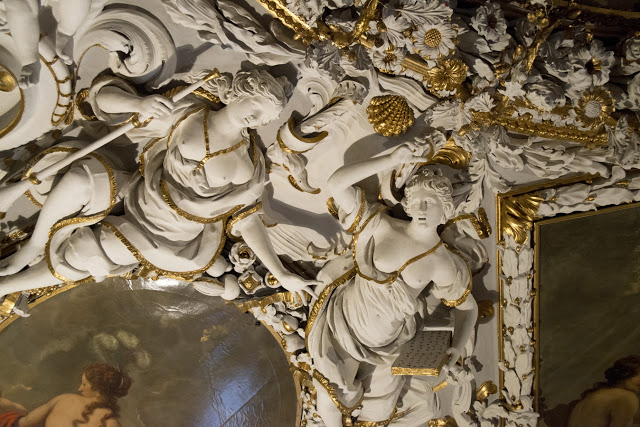
Next up was the throne room. As I explained it to Carmela, here is where you’d have to curtsy on formal court visits:
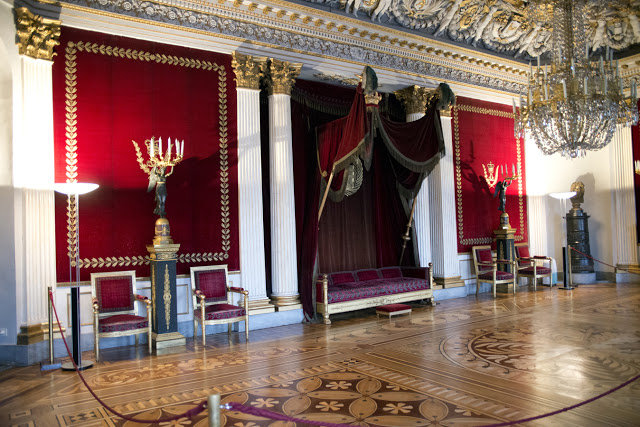
Throne room ceiling detail:

In the throne room antechamber I snapped this picture of a portrait of Friedrich III, a very powerful man who became German Emperor and King of Prussia. He figures so largely in much of the European history I’ve encountered that I had to get a closer look at him:
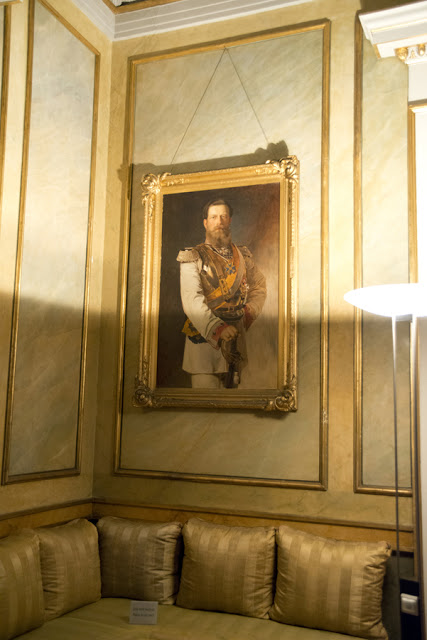
The following isn’t a very good picture, but the subject of it is Queen Victoria’s tea set found in the Duke’s study:
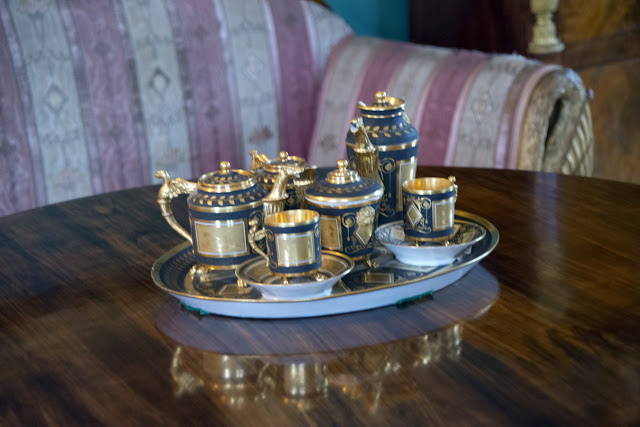
This portrait also in the study of Duchess Luise, first wife of Duke Ernst I, and her children caught my eye. It was done by an artist bearing the same last name as my maiden name. I always knew I had ties to royalty – of course it was an artist to the court! His name was Ludwig Doll (ok, his last name had an umlaut, but who’s counting).
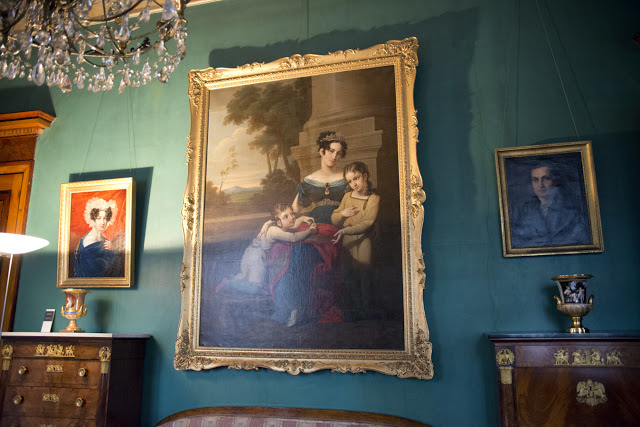
This was the Duke’s bedroom until 1893. After that it was used by Queen Victoria when she visited. The WC in the left corner is supposedly the first flushing toilet on the European continent. I think Queen Vicky brought it with her!
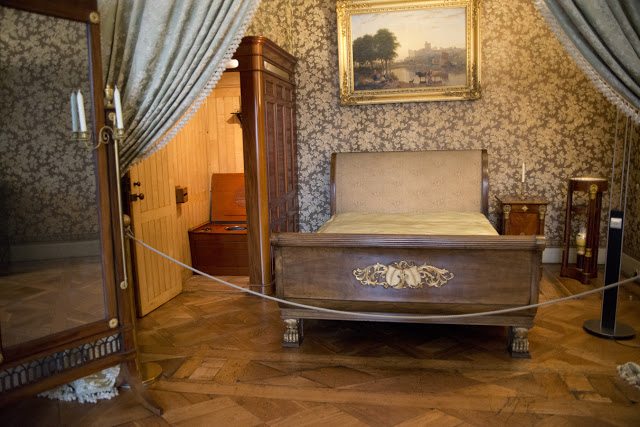
After a couple more smaller rooms, including the duke’s library, we descended a staircase and found ourselves on the ground floor in the quarters of the Duchess. Here is her shoe closet:
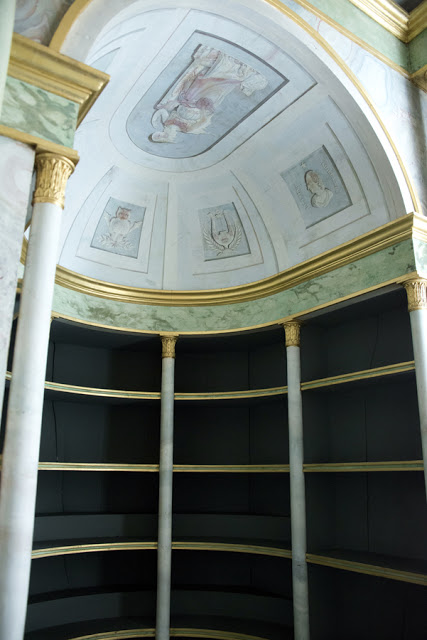
Ceiling detail of the dressing room:
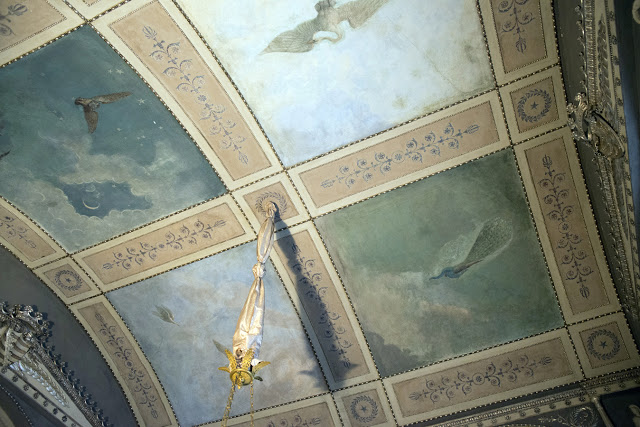
This is her bathtub, formerly just a bench in the dressing room:

The painting and decor style on this floor was distinctly different from the grandeur we’d seen upstairs. However, somehow it befit a royal woman with muted colors and delicate designs. Here is a ceiling detail of her study:
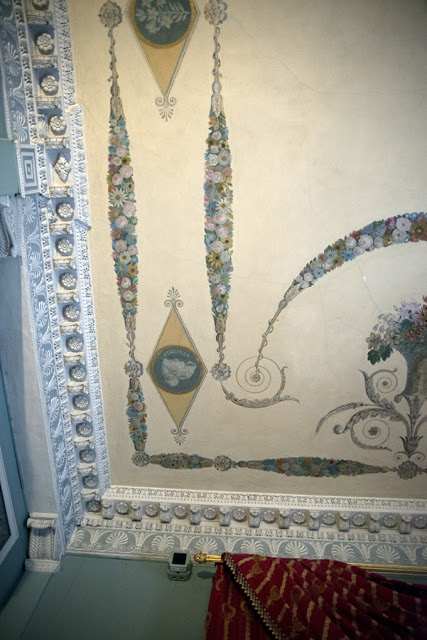
I managed to capture a shot of our silent tour guide in the study:

And the Duchess’ bedroom:
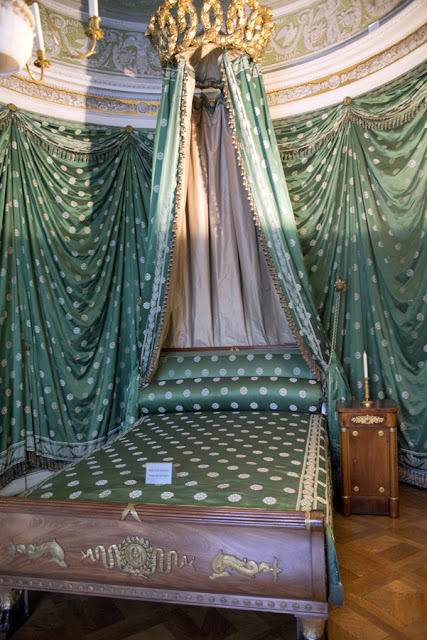
Here is a shot of what’s called the Wooden Room. Wood panels, furniture and even the huge candlesticks were fashioned of wood from around the globe by master artisans:
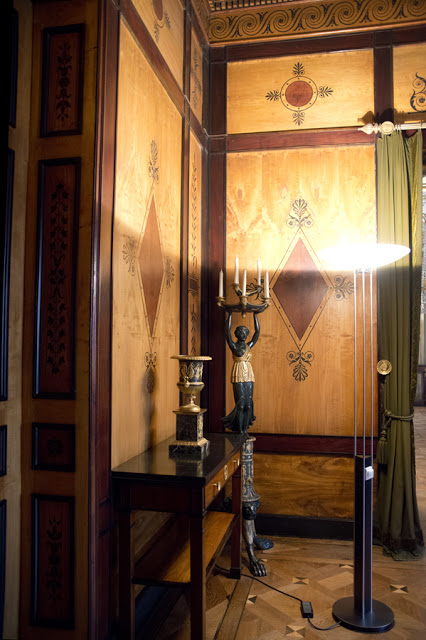
Here is another magnificent crystal chandelier from, I believe, the Duchess’ audience room. I wish you could see how sparkling clean all this was!
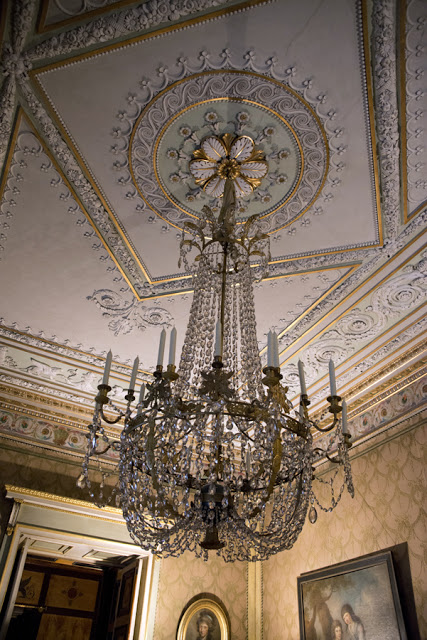
When we were through visiting the residential wing of Ehrenburg Palace, our tour guide led us across the courtyard to the opposite wing where the royal chapel was located. You can’t see it well in this photo, but the organ is located in the loft above the altar:


The loft in the back of the chapel is enclosed and was where the royals attended services. They could enter from the palace without going outside and also enjoy privacy from the unwashed masses in the pews below.
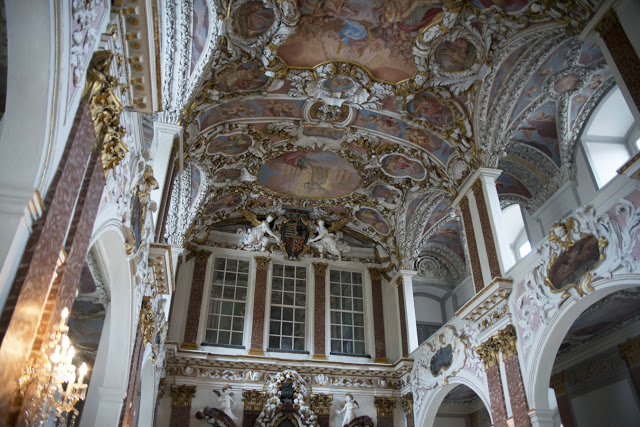
Our tour lasted just short of an hour and was SO worth the trip: time, money and effort. I highly recommend this tour – the palace is one of the most beautiful I’ve seen in Europe. Afterward, Carmela and I visited the tiny gift shop and made a couple of purchases. On our way out of the castle grounds, I noticed this marker for Melchior Franck, a famous composer of Protestant religious music. I think I remember him from Music Appreciation in college. He served as Chapel Director under Duke Casimir in the 1600s. He certainly has a great name!
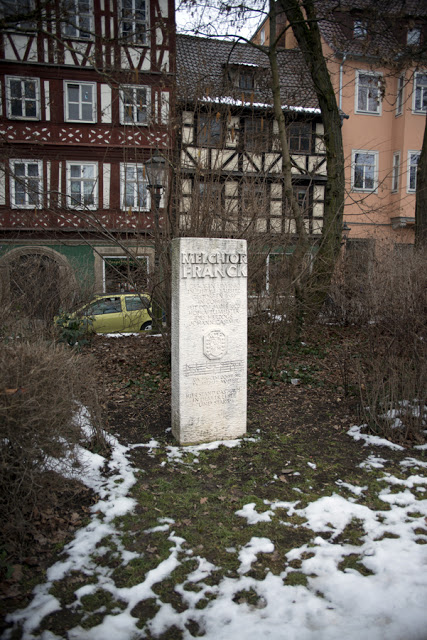
Carmela and I stopped downtown for a traditional German lunch and beer, then we walked a little bit around the town square. Here’s the old courthouse:
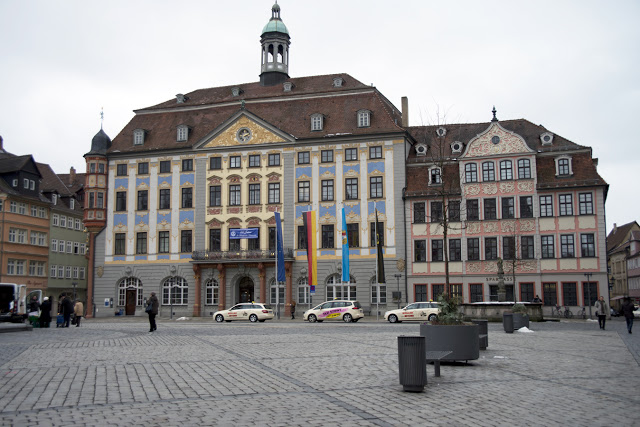
Monument to Prince Albert:

Stadthouse, which was used for governmental offices of the duchy:

I definitely plan to get back to Coburg several more times. They have three more castles and lots more sights, so I know you’ll enjoy those posts. And I’ve been up to some mighty interesting things recently, so stay tuned!
Photo for No Apparent Reason: